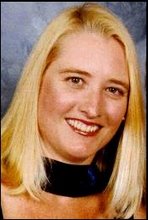In the runup to the 2008 Presidential election, which is already off to a sputtering start, certain buzzwords are being commandeered by party strategists, politicos, and the media in an effort to define what the various candidates have to do in order to get ahead of the pack.
So far, some of the typical words and phrases describing these efforts have included "connect," "articulate," "make the case," "persuade," "explain," "outline," "promote", "put forth," "sway," "convince," "capture," "captivate," "pitch (as in sales)," "show charisma," "achieve star power," among many others. Recently, one so-called "expert" on a national conservative talk radio program compared Hillary Clinton and Barrack Obama by saying Mr. Obama was "comfortable in his own skin," compared to Mrs. Clinton.
Though some may see these efforts as a mysterious and unknowable process, it’s actually as plain as the nose on Jimmy Durante’s face. All of these words and phrases can be distilled down to one simple concept: Presentation. The more a candidate understands how to make a good presentation, the more effective he or she will be in achieving all of the above, and any other name that might be devised. It’s still presentation.
Let’s face facts. To be an actor, you need to have about fifty or sixty tools in your presentational toolbox, and you have to know how to use them in a wide range of venues, which may take years to master. To be a good presenter, however, you only need to know about ten or fifteen, in fairly predictable venues, which, theoretically, should be much easier and take a lot less time to do. This is why Ronald Reagan earned the moniker "The Great Communicator." Even though by most accounts he was only a "B" actor, he understood those ten or fifteen presentational elements cold.
Here are some of the tools we mean:
1) Eye contact - Everyone knows you have to make good eye contact with your listener in order to be believed. If you were standing at a party with someone who refused to look you in the eye, you wouldn’t trust him as far as you could throw him. Why should it be any different in a group? Yet when most of our leaders get in front of a crowd, they splatter their message around the room, talking to THE ROOM, rather than to any people in it. Since we know that as listeners we will only trust someone who looks us in the eye and won’t trust those who won’t, it becomes a simple matter for a leader to use a specific presentational technique. They simply need to look at just one listener for a complete sentence or two, before moving on to another person. Then they should make solid eye contact with that next person, and complete a sentence or two to them. It takes discipline, yet it’s the only way to capture the appearance of trust that proper eye contact provides.
2) Gestures - We make gestures all the time, and almost never think about them when we are having a one-on-one conversation. But once we stand up in front of a group, suddenly we don’t know what to do with our hands. If we have a lectern, usually we solve the problem by leaning on the lectern, which gives us a lovely no-neck fullback posture (very attractive... not!) Often when we do gesture, it’s because we’ve thought about it, planned it, and stuck it in when we felt the time was right. Unfortunately, when we do that, it inevitably ends up being late, because a natural gestures ALWAYS precedes the words the gesture is to accompany, and when you think about them, they become add-ons, so they are always late. NEVER plan gestures, period. Wait until you have an overwhelming urge to gesture, than give yourself the freedom to gesture when that urge hits you. It’s the only way to avoid late (and repetitive, and fake-looking, unnatural, knuckle point and karate chop) gestures.
3) Vocal Range - When we talk naturally, we use a very wide range of vocal pitches, running up and down many octaves of the pitch scale willy-nilly. When we start reading, or regurgitating a well-rehearsed script, we almost always fall into the grade school reading-out- loud cadence, when we begin slightly above a monotone pitch and then slide ever so slightly down to just below a monotone pitch (think "I pledge allegiance to the Flag," or "The Lord is my shepherd, I shall not want.") To be an effective presenter, you must be able to recapture the much wider vocal range that comes naturally to us.
These are just three of the simplest tools a presenter must understand, and anyone who achieves any or all of them will, without question quickly rise to the top, in politics or any other scenario. During this next election cycle, it’s imperative that we become more astute observers, so that we are able to recognize when presentational techniques are being employed. That way, we will have the opportunity to start asking ourselves, do we really like that person and his or her policies, or are we just enamored by the fact he or she has learned a few presentational tricks of the trade?
Considering the last great orator who was able to apply all fifteen of the elements of presentation effectively was Adolph Hitler, it’s a lesson worth remembering.
Subscribe to:
Post Comments (Atom)


No comments:
Post a Comment